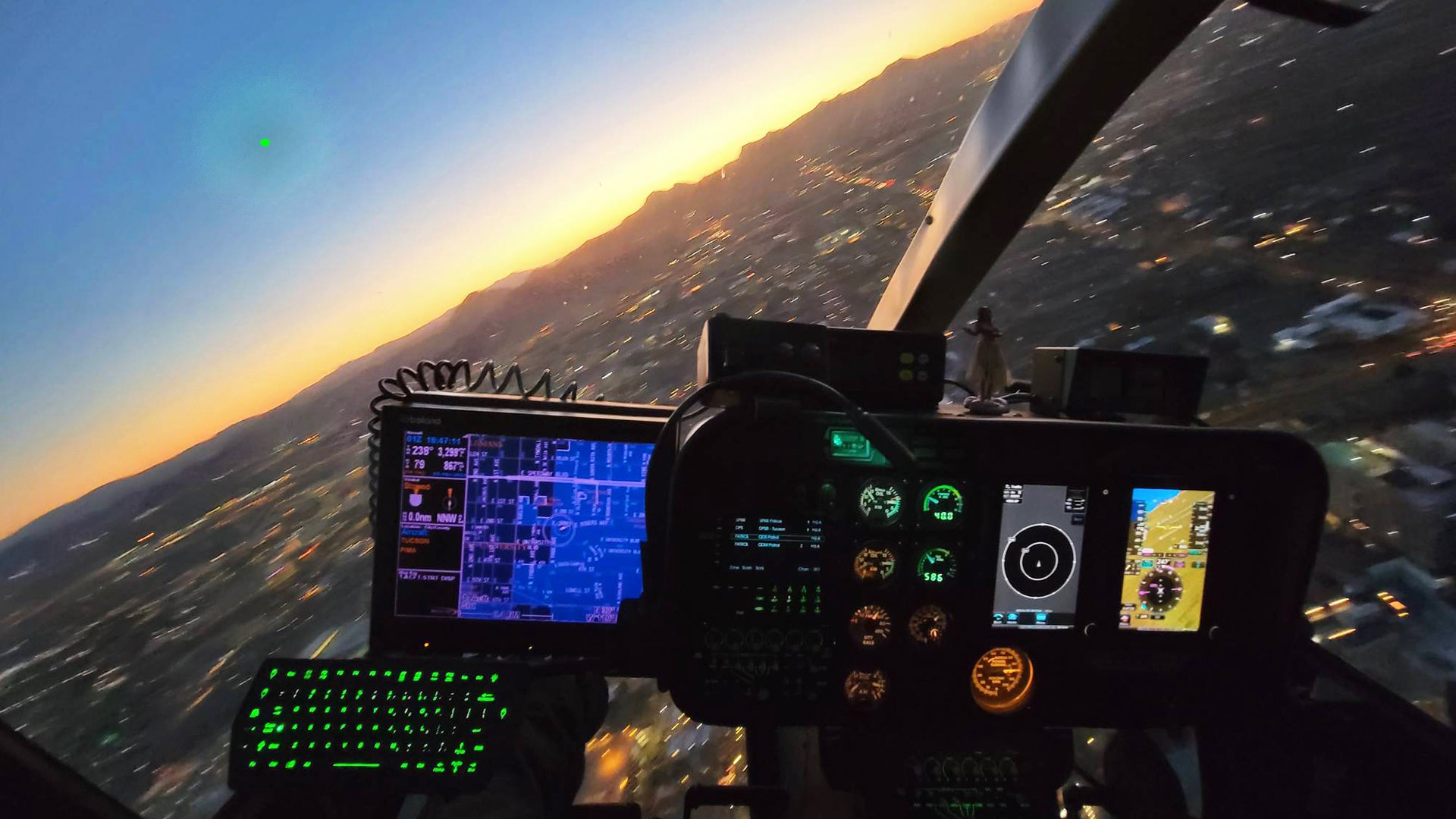In February 2021, what was described as a “highly modified drone” was able to evade and outrun helicopters operated by both U.S. Customs and Border Protection (CBP) and the Tucson Police Department (TPD) after entering sensitive airspace. An FBI investigation was announced shortly after, in which the bureau sought the public’s help for information related to the case. The War Zone has now obtained the TPD’s official Case Summary Report from the incident, which shows the air crews aboard the two helicopters that chased the drone were mystified by the capabilities it displayed.
The drone was first spotted above fuel tanks just west of Davis-Monthan Air Force Base, and flew into controlled airspace surrounding the base and Tucson International Airport after the TPD and CBP helicopters began their pursuit. The law enforcement helicopters followed the drone northwest out of the city before losing it in the clouds around 14,000 feet. The CBP was operating an Airbus AS350 on the night of the incident, while sources close to the investigation tell us the Tucson PD Air Support was flying a Bell 206B-3 Jet Ranger.
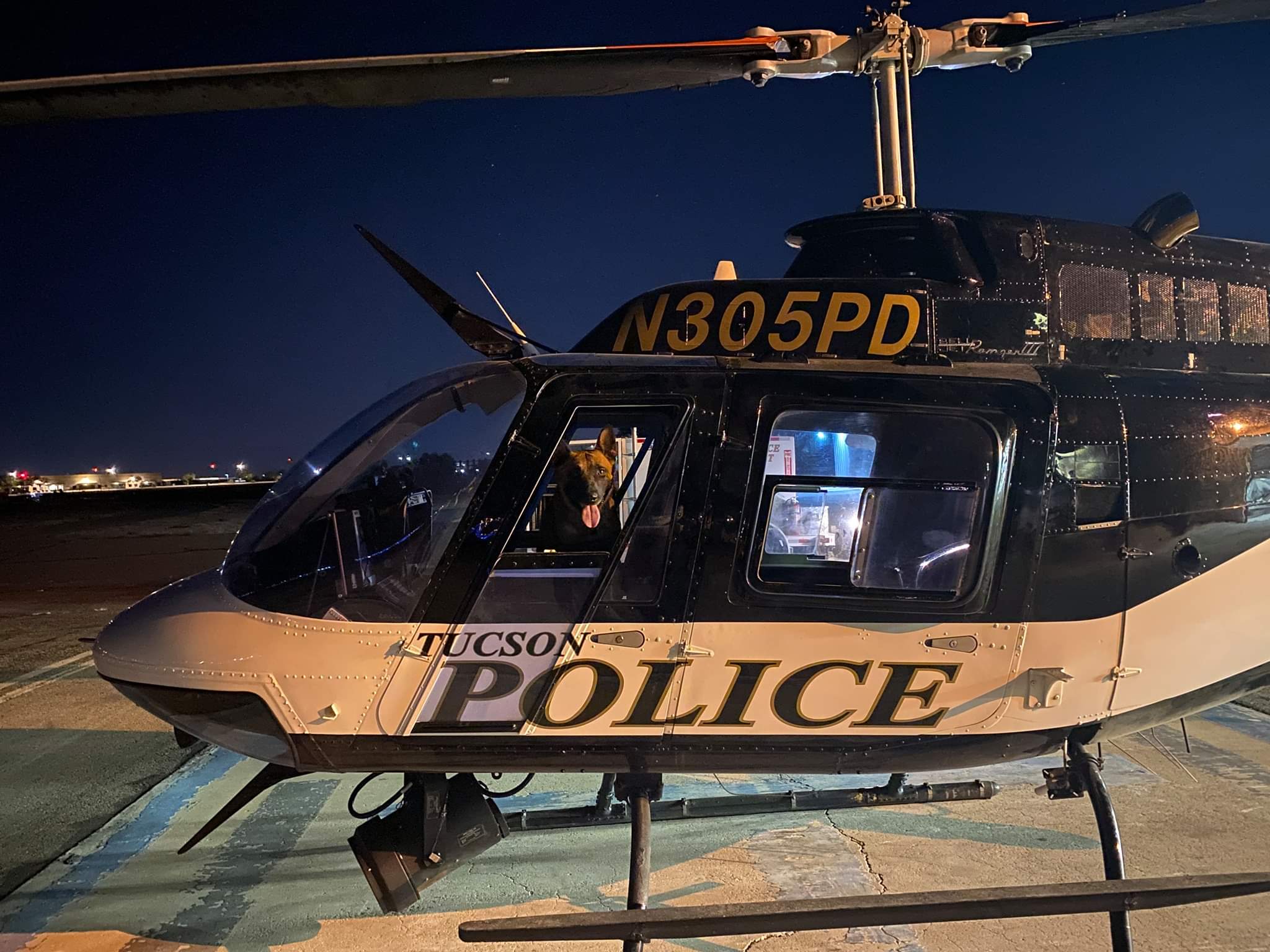
The story of the mysterious drone encounter above Tucson was first broken by Dan Marries of KOLD News, a local CBS affiliate out of Tucson.
Marries shared details about the drone with The War Zone following our initial reporting, telling us that the FBI agents involved with the case said that the drone was reported to be “highly modified,” made “erratic maneuvers,” and even strayed into military airspace while reaching an altitude of 14,000 feet and maintaining speeds in excess of 100 mph into a headwind. In an interview on KOLD, an FBI agent familiar with the case reported that the FBI isn’t sure if the drone was a quadcopter or hexcopter configuration.
Thanks to a TPD records request, The War Zone can confirm details about the drone’s alleged flight capabilities and flight path as reported by the TPD helicopter crew in their official Case Summary Report. For one, we can now pinpoint the initial location the drone was spotted by the Tucson PD air crew: the corner of East Ajo Way and South Palo Verde Road, directly adjacent to a fuel terminal operated by energy company Kinder Morgan and just west of Davis-Monthan AFB.
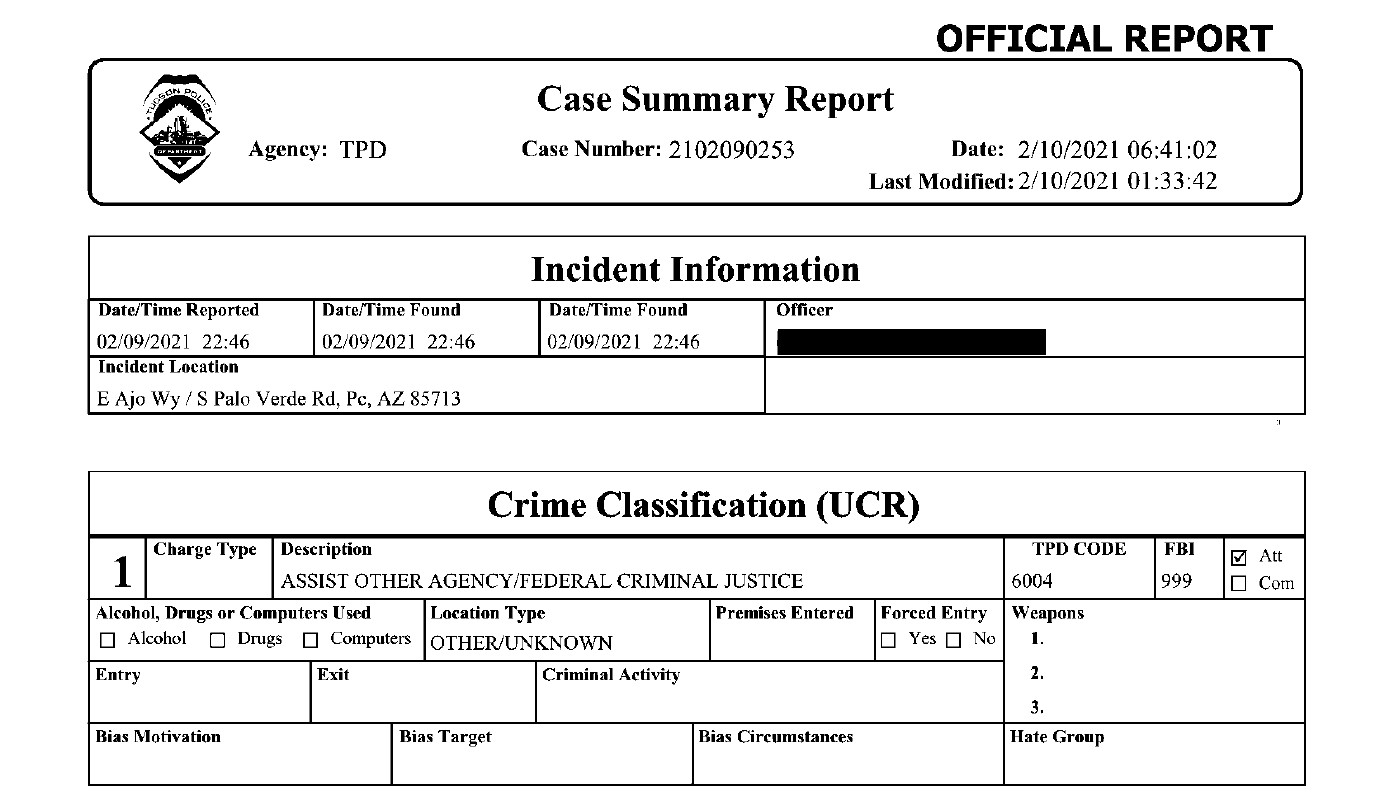
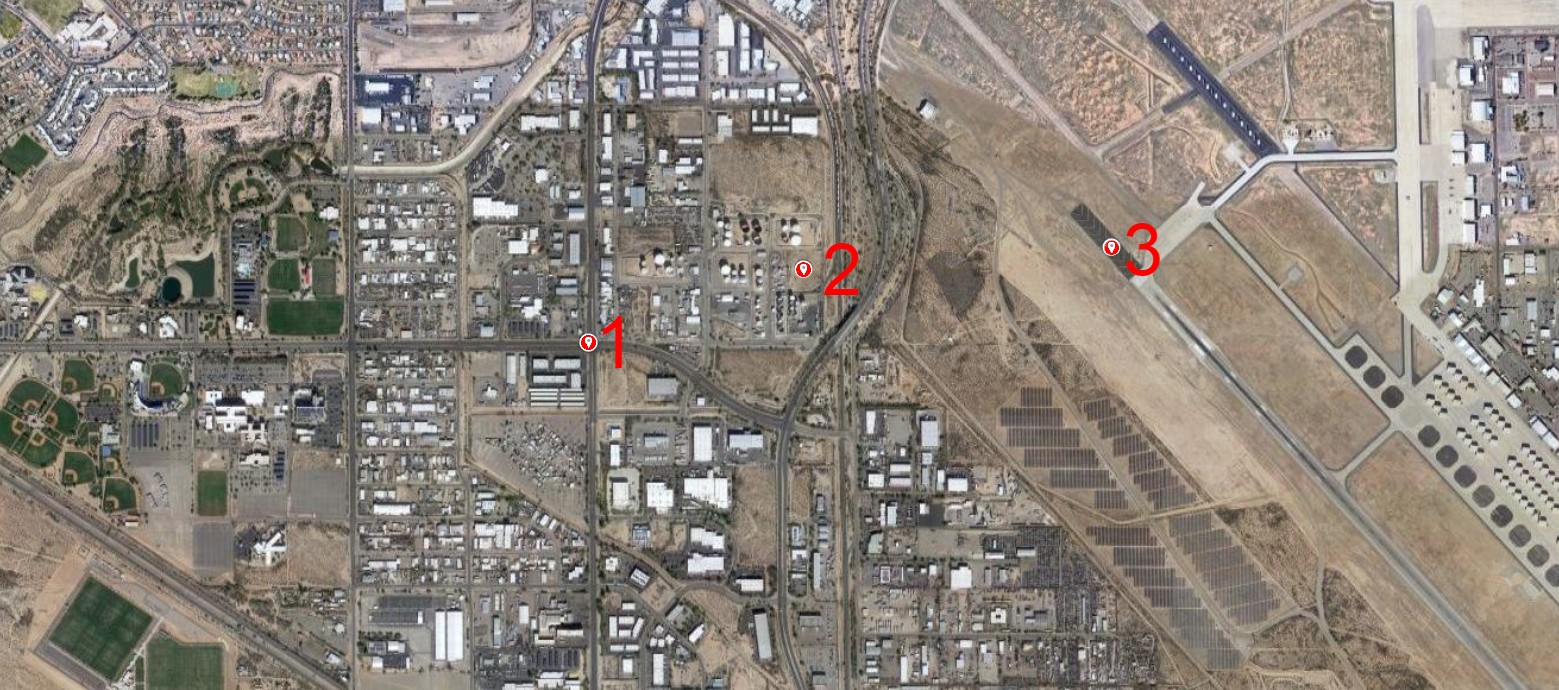
The Case Summary also confirms our earlier reporting that the drone featured a single green light on its underbody and was difficult for the TPD helicopter’s spotter to observe through night vision goggles. Note that the report states that no video recording was made of the incident by the TPD.

The report’s “Notes/Narrative” section, authored by the TPD helicopter’s Tactical Flight Officer, then details how the drone “maneuvered all over the city” while flying above 10,000 feet, all while behaving “in a manner to hamper [the TPD crew’s] ability to track it visually.” The TPD crew also reported that the drone “appeared to move in an erratic pattern as if the signal with its home station was getting weaker” as it flew northwest out of the city. The flight officer then reports the drone was last seen at an altitude “in excess of 12,000 feet” flying over 65 knots (74 mph).
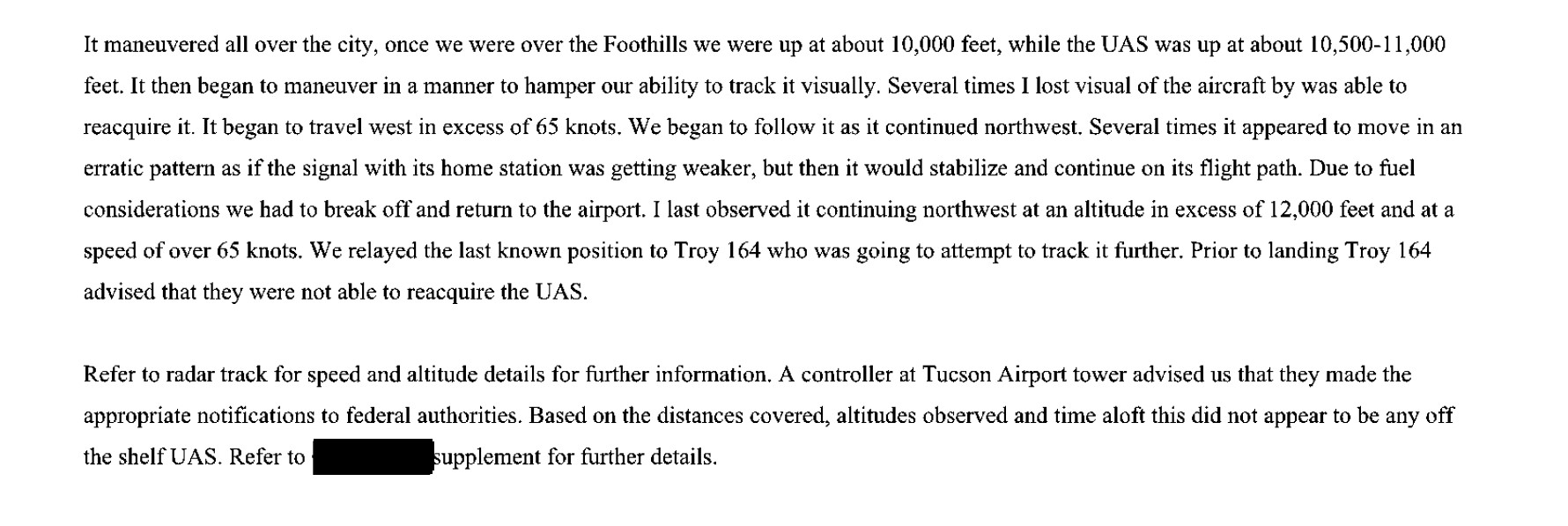
The report’s “Supplement Notes” section was authored by the helicopter’s pilot and details the coordination between the TPD, Tucson Air Traffic Control (ATC), and the CBP helicopter crew. The TPD helicopter pilot wrote that the crew “had hoped the uas would exhaust its battery reserves and be forced to land,” but that “unfortunately, this was not the case.”
The pilot also stated that the drone “was very sophisticated/specialized and able to perform like no other uas” he had observed previously, able to fly circles around his helicopter as the TPD pursued it up to 14,000 feet at speeds “well in excess of 100mph.” The pilot also felt that it was “obvious that the controller had clear sight of both the helicopters tracking it by the way it would orbit us and abruptly fly behind us and attempt to avoid our visual contact.”
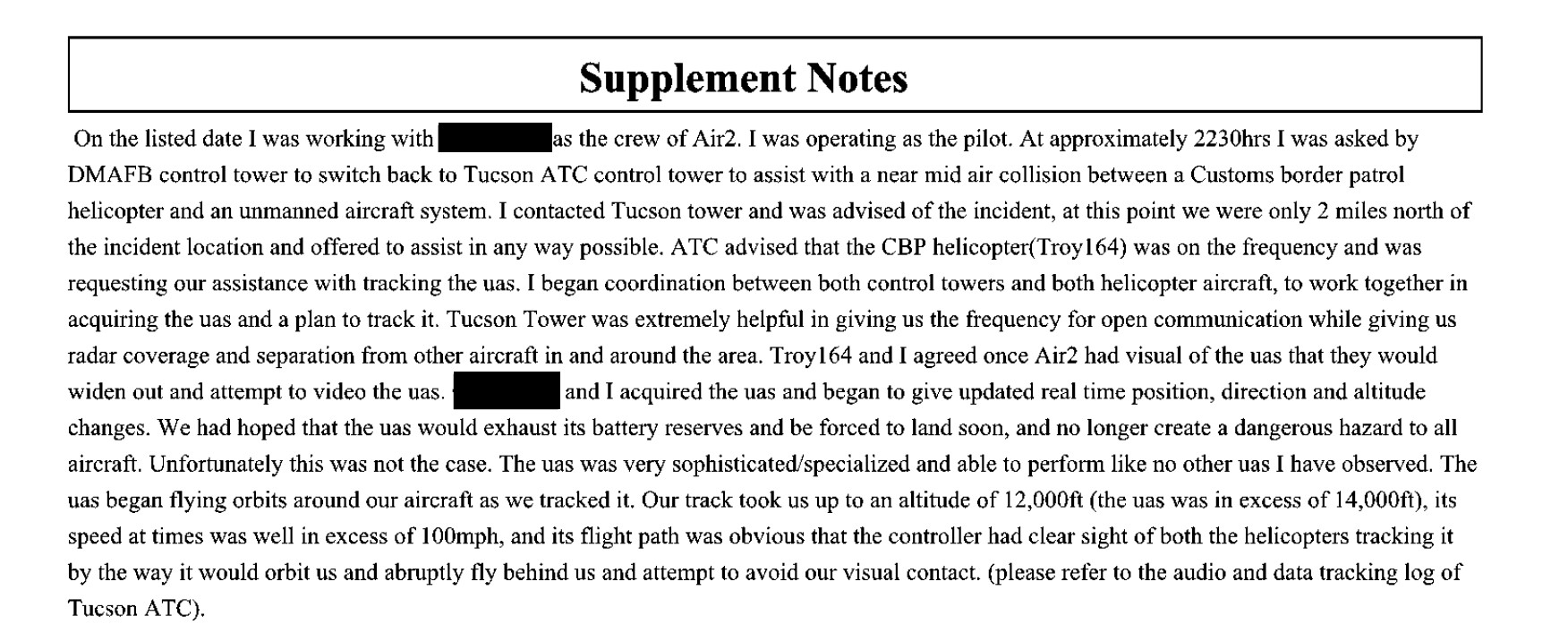
The pilot recounts that the TPD helicopter tracked the drone for over an hour as it flew into 40mph headwinds while maintaining 100mph airspeeds. Despite tracking the drone extensively, the pilot notes that the crew was unable to get a good visual on it. “Although we could not determine its exact size or characteristics we primarily tracked it by a single green non-blinking light illuminating from the craft,” the report reads. Eventually, both the TPD and CBP helicopters had to disengage their pursuit in order to refuel after losing the drone in cloud cover around 12,000 feet.
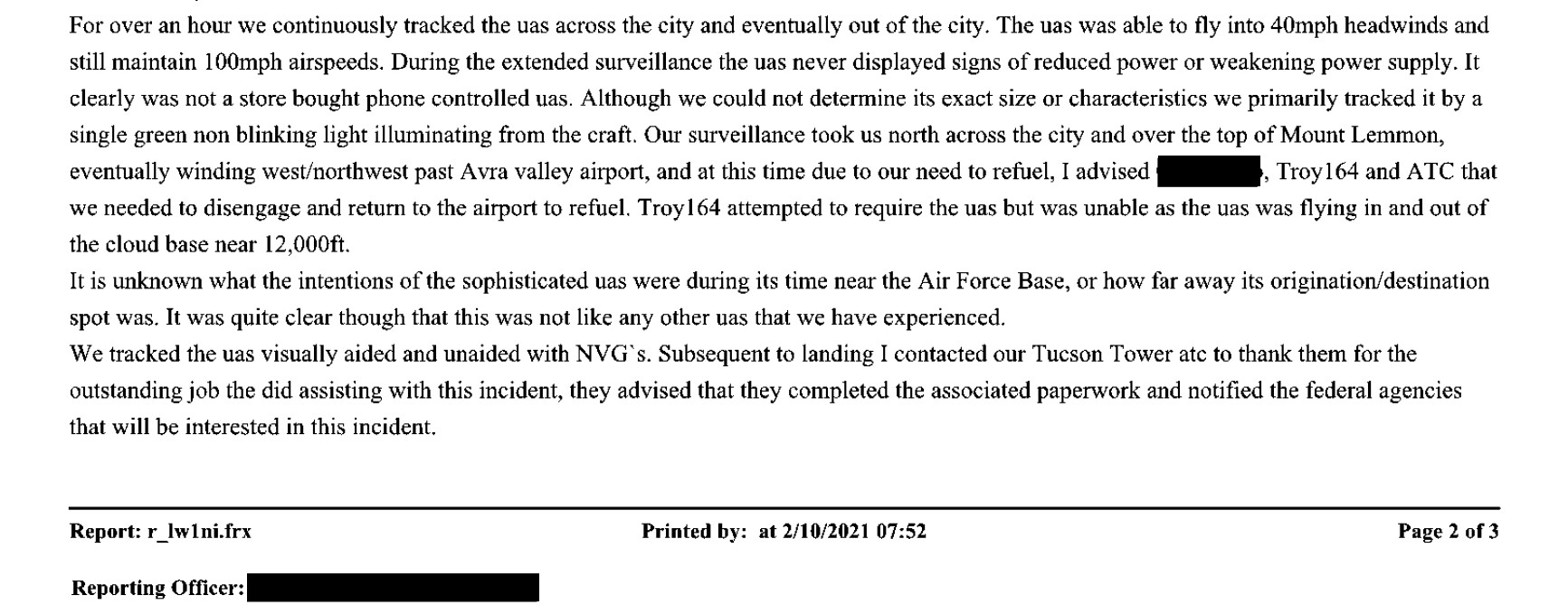
“It is unknown what the intentions of the sophisticated uas were during its time near the Air Force Base, or how far away its origination/destination spot was,” the pilot concluded, adding “It was quite clear though that this was not like any other uas that we have experienced.” Sources close to the investigation tell The War Zone that while the TPD regularly encounters drones in the air, they are typically small, off-the-shelf quadcopter models.
Despite these details coming to light in the case of the mysterious “highly modified drone” seen above Tucson, it remains unclear what exact type of configuration could allow for the flight characteristics described in this newly-obtained police report. It certainly seems as if its pilot was highly experienced given the fact that the drone was able to run circles around the helicopters at high altitudes and speeds. The drone must have also possessed the ability to supply its pilot with superior situational awareness in order to pull off such feats.
The fact that the drone appeared to maintain a high-quality command and control link suggest some fairly sophisticated hardware above what is commonly found on consumer quadcopter or hexcopter configurations, even higher-end models. It’s also unlikely that this craft ran on battery power.
Whatever it was, the flight characteristics the mysterious craft displayed above Tucson on the evening of February 9 are truly eyebrow-raising and only increase the bizarre and currently unexplained nature of the incident.
We continue to investigate and are pursuing multiple FOIA requests related to this puzzling event.
Contact the author: Brett@TheDrive.com
